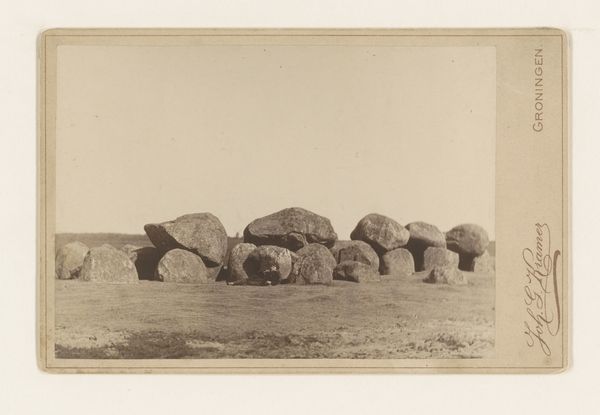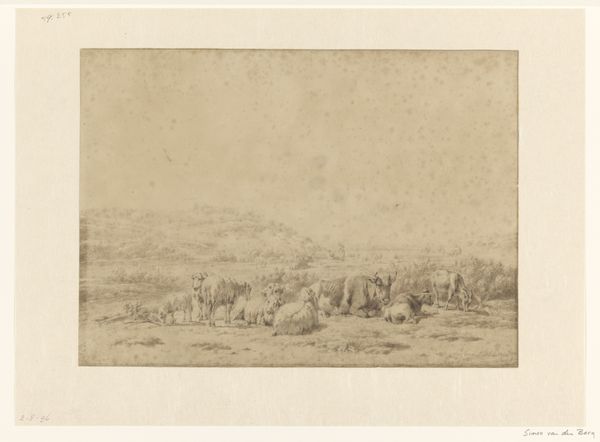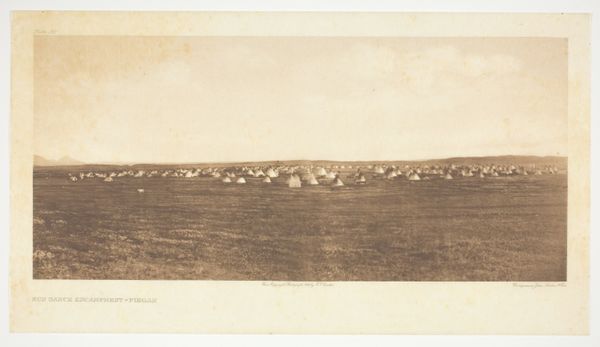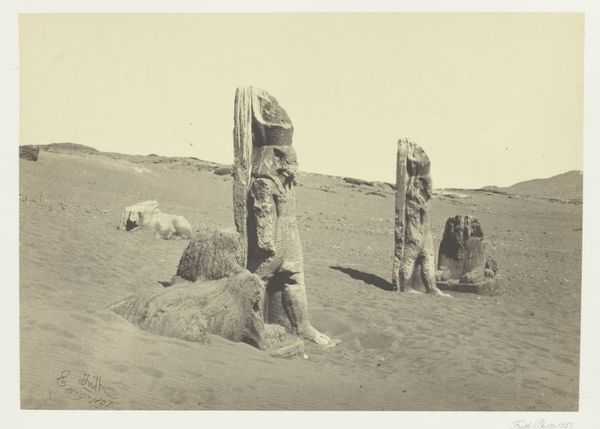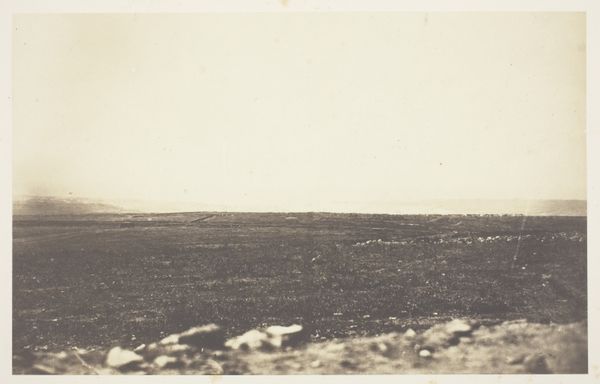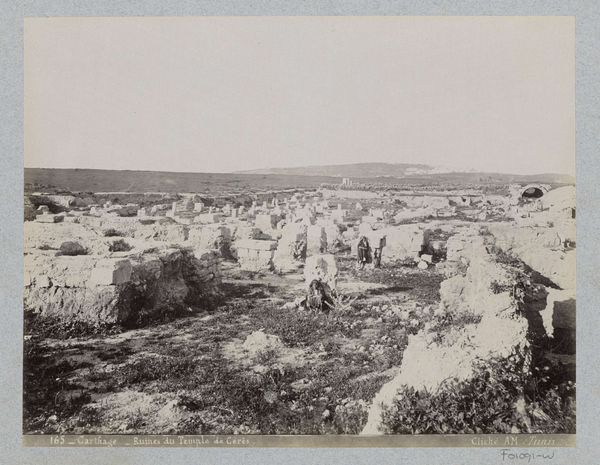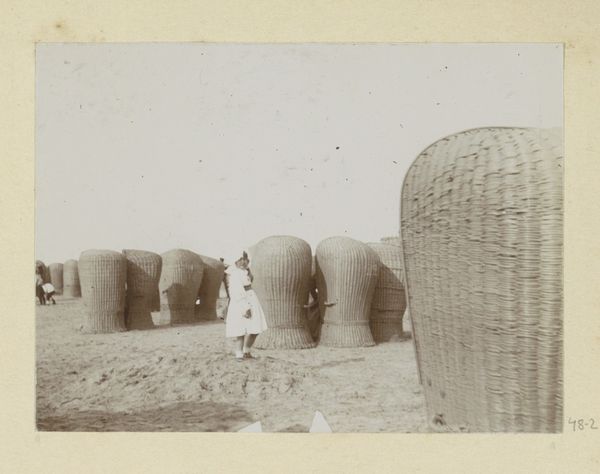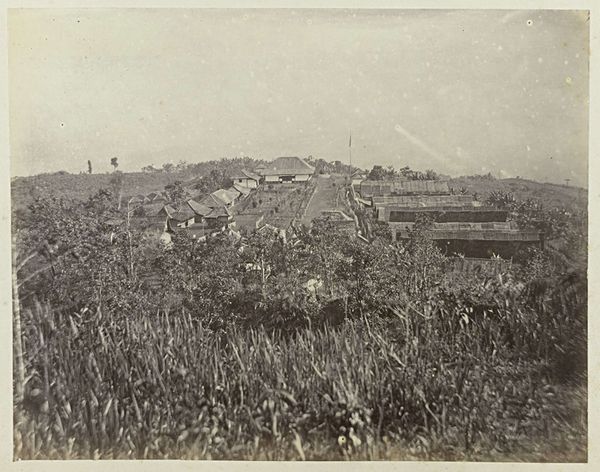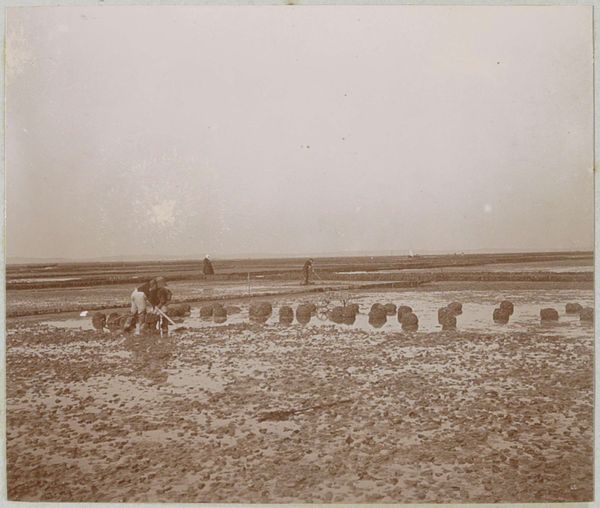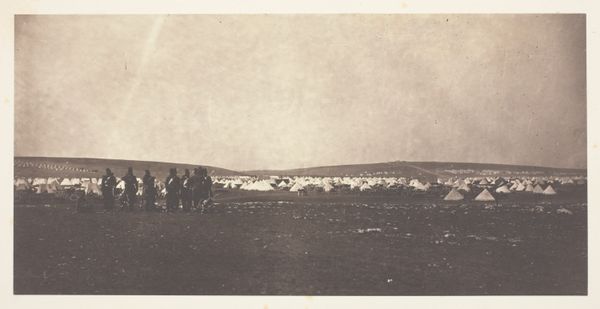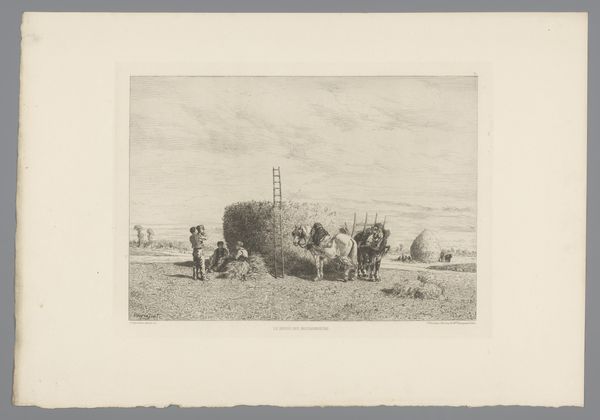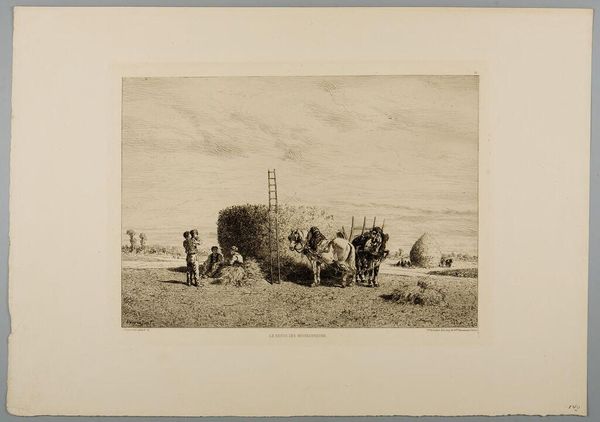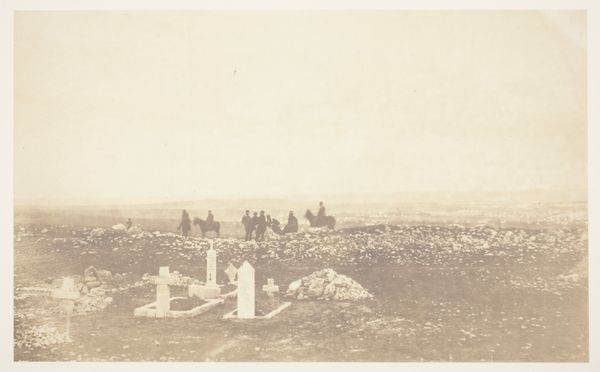
photography, site-specific
#
landscape
#
photography
#
site-specific
#
prehistoric
Dimensions: height 70 mm, width 83 mm
Copyright: Rijks Museum: Open Domain
Curator: This photograph, taken in 1901, captures the Menhirs of Carnac in Brittany. The photographer, Delizy, offers a glimpse into this fascinating prehistoric site. Editor: It’s stark, isn't it? A field of aged stone, softened by the monochromatic tones. The scale is monumental, but the composition lends it an almost melancholic stillness. It's a portrait of time, if time could be sculpted. Curator: Indeed. It’s worth noting the social context surrounding these menhirs. As standing stones, they speak to ancient belief systems, communal organization, and, perhaps, ritualistic practices of Neolithic societies. The act of erecting these massive stones likely involved significant labor and coordination, reflecting a structured social hierarchy. Editor: It begs the question, though, doesn’t it, what narrative were those Neolithic communities writing in the landscape with those stones? It is fascinating how later interpretations frame prehistory with this kind of sepia tone; It almost aestheticizes what could have been a moment of crisis. Curator: Absolutely, and from a historical perspective, this image marks a moment when archaeology and photography were intertwined in shaping our understanding of prehistory. The politics of imagery become clear as sites like Carnac were re-presented to the modern world. Editor: It seems we always view the past through our present-day assumptions, including what photography as an art form means. These monoliths, stripped of vibrant, complex context, feel as monumental as they feel flattened and neutralized within Delizy’s lens. Curator: And that interplay, that tension, is precisely what makes engaging with historical artifacts like this so rewarding. It pushes us to consider not only what was, but also how our present influences our perception of what once was. Editor: Yes, that’s the important point, isn’t it? These monoliths are silent witnesses to societal shifts, power dynamics, and the never-ending re-authoring of the past. Thanks for the context, that was fascinating.
Comments
No comments
Be the first to comment and join the conversation on the ultimate creative platform.
